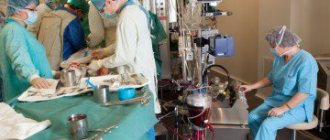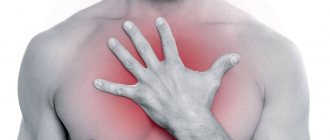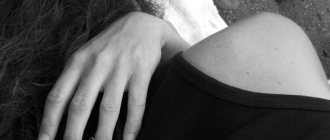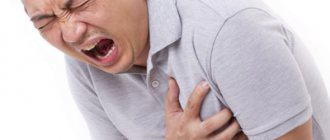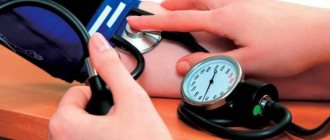The effect of sport on the cardiovascular system
Cardio exercise is beneficial for people of any age. These include race walking or running in the evening, cycling, swimming, and dancing.
Sports cardio loads:
- accelerate the heartbeat, strengthen the muscle fibers of the myocardium;
- improve blood circulation and oxygen delivery to the brain;
- normalize blood pressure and functions of the cardiovascular system.
Sports increase the endurance of both the heart and other tissues of the body. You just need to be examined and choose the right cardio program, training intensity, and degree of load.
Swimming in Baku
If you are interested in swimming lessons in Baku, swimming for children in Baku, children's pool in Baku, swimming for adults in Baku, therapeutic swimming in Baku, professional swimming in Baku, then contact us.
You can swim? Swimming in the sea and swimming in a pool are a little different, but unfortunately not everyone has access to salt water year-round. The pool is a great place to relieve fatigue and get a boost of energy! And it is he who will help get rid of ten diseases! Look what!
Swim, take care of yourself, smile more often and!
1. Neuroses
When swimming, water affects nerve endings throughout the entire surface of the body, relaxing and calming. The influence of water temperature regulates the processes of excitation and inhibition, relieves fatigue, improves memory and attention by improving blood circulation in the brain.
All this has a beneficial effect on the central one - after swimming a person falls asleep easier and sleeps more soundly.
In addition, water evokes pleasant associations that are missing in everyday life, which has a beneficial effect on the psycho-emotional state in general.
2. Joint diseases (osteochondrosis, arthritis, arthrosis)
In many cases, swimming is the only sport and physical activity that is indicated for joint diseases, since in water a person does not feel the weight of his body.
Smooth movements in the water massage the periarticular tissues, thereby improving the outflow of lymph, reducing swelling, regenerating cartilage tissue, and relaxing spasmodic muscles.
3. Herniated discs
According to statistics, today for every 100 thousand people there are 100 cases of intervertebral disc herniation. In many cases, swimming in the pool helps a person cure this disease without surgery.
Exercising in the pool allows you to strengthen your back muscles, which ultimately take on part of the load, thereby unloading the damaged one.
4. Paralysis and partial loss of the ability to move
The main manifestation of paralysis is the absence or decrease in voluntary motor activity, as a result of which a person loses the ability to walk and make active movements. Therefore, swimming is practically the only option for physical activity.
Swimming is also an effective means of preventing strokes, which often lead to paralysis. Swimming helps normalize vascular tone and pressure, and also effectively fights obesity, which is also the cause of arterial hypertension (the cause of stroke).
5. Rehabilitation after injuries
According to statistics, every eighth inhabitant of the planet receives a serious injury at least once during his life in the form of fractures, back injuries, meniscal tears and other knee injuries. Most injuries lead to surgery, after which the human body requires recovery.
Swimming in the pool promotes rapid restoration of the muscular paravertebral frame, restores muscle tone and reduces pain, which allows you to expand your motor range.
6. Obesity, excess weight
Swimming for obesity puts a simultaneous load on all muscles, but at the same time completely removes it from the spine and leg joints, compared to any “land” physical activity, because water provides the effect of weightlessness.
In addition, swimming, water aerobics and even just swimming are very beneficial for the cardiovascular system (a big problem for obese people): blood circulation improves, blood flow goes to all internal organs, while the outflow of blood from the periphery also improves, and blood pressure stabilizes.
7. Heart disease
Swimming is an effective means of treating and preventing diseases of the cardiovascular system, such as: hypertension, angina pectoris, vegetative-vascular dystonia, atherosclerotic vascular lesions.
The use of swimming for the treatment and prevention of diseases of the cardiovascular system makes it possible to reduce the load on the body from the use of chemicals, and sometimes even abandon them altogether.
8. Bronchitis and bronchial asthma
Swimming is both a breathing exercise and a massage, and also has its own effect on our respiratory system. Exercises in the pool are recommended for all patients with bronchopulmonary pathology, and swimming is perfect for preventing and improving the functional parameters of the respiratory system, as well as the resistance of the whole body.
For people suffering from pathology of the bronchopulmonary apparatus, it is not only advisable, but vitally necessary to engage in swimming.
9. Varicose veins
Patients with varicose veins are prohibited from many strength exercises in the gym, running and intense aerobics, as this leads to increased stress on the legs, which increases venous pressure in the lower extremities. This leads to the development and worsening of varicose veins.
Training in the pool, in turn, does not have such consequences. During swimming, due to the body being in a horizontal position, blood flows out of the legs, and there is also a decrease in the load on the legs compared to other sports. Swimming has a beneficial effect on the veins, providing them with relaxation and normal blood circulation.
10. Poor posture
Poor posture is a common health problem in children. If in the elementary grades poor posture is registered only in every fifteenth child, then by the time they graduate from school it occurs in half of the children.
During swimming, the human body is in a weightless state, due to which the gravitational loads on the spine are reduced.
At the same time, it stimulates the strengthening of the muscular corset of the spinal column, harmonizes the tone of the paravertebral muscles, muscles of the chest and lower back. Swimming develops coordination of movements, which largely suffers in children with poor posture.
Will swimming help not only relax, but also improve health for people with heart problems? It turned out that there are many pitfalls in this topic, which Tatyana Anikeeva, medical director of the Dobrobut MS, told Health 24 about.
Cardiovascular diseases – among both men and women. Heart disease harms many people, regardless of age or gender. Unfortunately, we cannot influence our genetic code to avoid hereditary diseases, but most factors can be influenced.
The main causes of cardiovascular diseases:
smoking, high cholesterol, high blood pressure, overweight, obesity, diabetes and
lack of exercise
.
Our muscles are “mini pumps”. And the heart is the largest “pump” that pumps blood. When muscles work, they push blood through the vessels, and it flows further throughout the body. Therefore, when a person does not move, the heart takes over the main function. And when we walk, squat, swim, we help him,” the doctor notes.
During physical activity, the heart rate increases and blood pressure changes. But what about the “cores”? After all, there are a lot of heart and vascular diseases. Can swimming be prohibited if you have cardiovascular diseases?
Swimming: benefits and harms for heart disease
It all depends on the severity of heart failure.
Many of us have heard about the concept of “heart failure”. This is not an independent diagnosis, but, as a rule, it is a consequence of many heart diseases. And the New York Heart Association even divided this diagnosis into several functional classes depending on the severity.
This classification helps determine in which cases swimming is beneficial and in which cases it is harmful. Moreover, we are not only talking about relaxing at sea or by the river, when the opportunity arises to swim. This also applies to regular visits to the pool.
Many of us are confident that we have no health problems. But if it is difficult for a person to swim 25 meters, while the person is young and relatively healthy, then the question involuntarily arises: “Is everything really all right?” Therefore, a visit to the doctor and a visit to the pool can serve as a marker that “everything is ok” or “it’s time to get treatment.”
Causes of heart pain during exercise
During training, chest pain can be caused by muscle damage or strain, increased load on the cardiovascular system, as well as ischemia, heart attack, angina pectoris, and other myocardial diseases. Triggers (provoking factors) include violation of exercise technique, pinched nerve or muscle fiber, VSD (vegetative-vascular dystonia), problems with blood pressure, stress.
Can physical activity harm the heart?
Properly selected physical exercises are one of the methods for preventing diseases of the cardiovascular system. However, there are conditions in which even a slight load causes pain in the heart when playing sports:
- Coronary heart disease (angina pectoris) is caused by a violation of blood transport to the myocardium through the narrowed lumen of the coronary vessels. This disease develops in people with atherosclerosis. An attack of pain is characterized by retrosternal localization, radiation to the left arm and shortness of breath.
The problem of symptoms in athletes is associated with an increase in myocardial mass, which leads to increased demands for oxygen and nutrients. During intense exercise, the need for adequate oxygen supply increases.
- Hypertrophic cardiomyopathy is a non-inflammatory lesion of the myocardial muscle mass, which is characterized by an increase in the number of fibers with a decrease in the volume of the heart chambers, resulting in a decrease in the amount of ejected blood.
- Uncontrolled use of hormonal and anabolic drugs. Heart pain after bodybuilding is often associated with the intake of proteins and testosterone, which help build skeletal muscle. However, the use of uncertified drugs in unregulated doses is accompanied by a delay in the development of internal organs, especially the heart, which does not have time to adapt to ensure sufficient blood supply.
In addition, a significant increase in the volume of the heart cavities contributes to the development of arrhythmias, as well as stagnation in the chambers (most often in the atria) with the formation of a blood clot. Such processes lead to the occurrence of thromboembolism - blockage of the lumen of a vessel with a blood clot, which requires urgent treatment.
Regular sports and bodybuilding with the correct use of dietary supplements and medications do not pose a danger to the functional state of the heart. However, due to the individual characteristics of a person, the presence of concomitant diseases and non-compliance with exercise techniques, there is a risk of aching, stabbing and burning pain in the chest.
Athletes who experience heart pain after exercise are advised to stop exercising and consult a physician for assistance. A comprehensive approach to diagnosing the underlying cause of pain should be used to develop treatment advice.
The appearance of heart pain after training occurs in both athletes and ordinary people. This causes anxiety and thoughts appear that something is wrong in the body. Indeed, such a symptom may indicate pathology, but not always.
Causes of heart pain after strength training
Heart pain after intense training often appears in physically unprepared people and athletes involved in bodybuilding, kettlebell lifting or other weightlifting disciplines. The cause is considered to be injuries to soft tissues, the spine, or a lack of oxygen in the blood and impaired hemodynamics after abandoning cardio training.
Chest pain after chest exercises
The pectoral muscles hurt after training due to soreness, stretching or tearing of muscle fibers due to excessive stress. The discomfort goes away on its own after 1-3 days.
The chest hurts for a long time when a nerve or intercostal muscle is pinched. A simple set of actions will help in this situation.
- Exhale completely.
- Take a half-bent position: chin to chest, shoulders forward, upper body hunched.
- Raise your shoulders up and take a deep breath.
- At the same time, exhale and roll your shoulders back, straighten your back, and bring your shoulder blades together.
If your chest hurts from a cramp, then you immediately need to stretch these muscles with Rader rows or dumbbell flyes. To prevent muscle spasms, this cool-down should be done after the parallel bars and bench press between sets.
Pain in the pectoral muscles after training other parts of the body
The chest also hurts after exercise involving the muscles of the back or shoulder girdle. The cause is considered to be pinched nerve or soft tissue and the transmission of impulses from the nervous system. In this situation, it is necessary to warm up those muscles, after training which discomfort appeared.
Possible reasons
Heart pain after training can occur due to cardiac or non-cardiac causes. Here are the most common reasons:
- Vegetovascular dystonia (VSD). This is a disorder based on dysregulation of vascular tone. Most often it occurs in children after physical education. Read more about heart pain with VSD.
- Neuralgia. Pain syndrome occurs due to compression of the spinal nerve roots by muscles or intervertebral discs.
- . Necrosis of the heart muscle, which occurs as a result of acute disruption of coronary blood flow.
- . Disruption of the normal contraction and relaxation of the heart muscle, resulting in insufficient blood flowing to the periphery.
- . Poor circulation in the coronary arteries.
- Cardiac ischemia. Infringement and narrowing of blood vessels lead to disruption of blood supply.
- Use of hormones and anabolic steroids.
Watch this video and you will learn a doctor's opinion about the causes of heart pain after physical activity.
After strength training
In some cases, athletes report the appearance of heart pain after strength training. This is due to a sharp, intense load on the body. Contractions of the heart muscle become more intense, therefore, the myocardium requires more oxygen. If she is not able to withstand such a rhythm, then disruptions in hemodynamics inevitably occur, pain and shortness of breath appear.
Also, discomfort in the thoracic region is associated with increased load on the spinal column. This usually affects teenagers who do not yet know their norm. There is a high probability of spinal injury when exercising with barbells, dumbbells, or exercise machines.
After aerobic exercise
Aerobic exercise includes swimming, running, dancing, race walking and others. A person needs them in a certain amount every day to enrich the body with oxygen. But if the load is too intense or long, then it becomes dangerous for the heart and blood vessels. Such activity provokes structural changes in the heart arteries and aorta and leads to disease. Professional athletes are at risk: skiers, cyclists, marathon runners and others.
After yoga
If asanas are performed incorrectly or not at the proper pace, it can cause pain in the heart. Therefore, beginners should definitely start yoga classes with a teacher. If such a situation has already occurred, the instructor will adjust the training plan and suggest ways to get rid of unpleasant sensations. This is usually achieved by reducing physical activity and changing asanas.
If there is not only pain in the heart area, but also an abnormality in blood pressure, then read more about what can be done or what should be done.
Heart pain during athletics training
Chest pain may appear during running, shaping, performing cardio training, other types of athletics disciplines, or after exercise.
Their causes are:
- hemodynamic disturbances due to atherosclerosis of the coronary vessels;
- lack of oxygen due to a sudden and intense start to exercise;
- deficiency of magnesium and other beneficial substances;
- pathologies of the heart, stomach, intestines;
- neuralgia;
- oncological diseases.
If heart pain or discomfort occurs, you should immediately stop the load, switch to smooth movements and restore breathing.
What to do?
If after stopping training the pain does not go away on its own, then you should take nitroglycerin under the tongue.
To identify the disease, a stress test is prescribed. This is an electrocardiogram performed at rest and during physical activity. The study shows several points:
- state of the heart circulatory system;
- the presence or absence of ischemia, vasoconstriction and atherosclerotic plaques.
If heart disease is detected, the cardiologist prescribes appropriate treatment.
In other cases, you must adhere to a number of recommendations:
- Be sure to warm up before performing exercises.
- Regulate the intensity of training, avoid overload.
- Increase physical activity gradually.
- Determine what actions provoke pain and remove them from the training program.
- Establish proper nutrition.
- Include foods with plenty of magnesium and potassium in your diet. These elements help restore electrolyte balance, make the heart rate stable, and improve conduction along neuromuscular fibers. These products include: beans, legumes, buckwheat, seaweed, lean meat.
- Strengthening the heart with herbal decoctions (based on Rhodiola, hawthorn).
- Eliminate bad habits.
- Get enough sleep.
- Drink enough water (on average two liters).
- Undergo an annual physical examination.
- Treat all diseases in a timely manner.
- If necessary, reduce the amount of cholesterol in the blood. For example, soy protein has a good effect.
- Be sure to include cardio training in your workout plan (lasting 30-60 minutes) to train the heart muscle.
Even professional skiers, runners, swimmers, bodybuilders and other athletes experience heart pain after training. It is imperative to find out the true reason why they arise and solve the problem accordingly.
Athletes often have heart pain after training. This worries people and makes them wonder what could be causing this symptom. Factors can be various phenomena, including serious pathologies, so it is important to consult a doctor. It may not be possible to continue physical activity.
Chest discomfort after yoga
Yoga is a type of gymnastics that has contraindications. Before the first workout, you need to examine the spine, myocardial functions, monitor the level of arterial and intracranial pressure, and consult with a neurologist.
More often after yoga, pain and discomfort occurs in the chest due to:
- consequences of stress;
- vertebrological disorders;
- cardiovascular and neurological diseases.
But doctors believe that the main cause of cardiac symptoms is an incorrectly compiled assan complex and training plan. Due to technically incorrect performance of yoga exercises, the heart and/or chest muscles hurt after training.
Heart problems: who can swim and who can’t?
So, there are 4 functional classes (FC) of heart failure depending on the severity, and these are 4 different options for physical activity in the form of swimming (or a ban on it).
I class
– this includes people who can swim even though they have heart disease. And in their case, such physical activity is even useful.
II class
– physical activity is possible, especially if we are talking about overweight people. They still need exercise. But if you are overweight, it is difficult to walk, and in water it becomes easier for a person to move. In this case, swimming or water aerobics is possible only under the supervision of a doctor.
III class
– for these patients, physical activity is limited. Even a short swim or other physical activity already causes shortness of breath and weakness.
IV class
– swimming is prohibited because a person suffocates even at rest.
So, if a person suffers from heart failure, then you must first find out with a cardiologist the cause of its occurrence, begin appropriate treatment, and then decide with a rehabilitation doctor or physical therapist how to choose the right load, explained Tatyana Anikeeva.
If a person has one of the diseases of the heart and blood vessels, but does not have heart failure and threatening arrhythmias, then in this case ordinary physical activity is useful.
Nature of heart pain
During training, compression and the appearance of diffuse, aching, stabbing, paroxysmal pain without increasing are possible. The sensation occurs behind the sternum or in the center of the back, often radiating to the left side of the body under the shoulder blade, in the shoulder, arm or up to the neck and chin. Accompanied by deterioration of health, arrhythmia, lack of air.
Often, chest pain after training occurs late - after 1-72 hours.
Attention! With true pain in the myocardium, panic suddenly arises, fear for life, perspiration, weakness, and the person stops moving. The absence of these signs indicates physiological causes and manifestations of non-cardiac pathology.
Localization and character
The nature of pain after physical activity can be:
Pain localization options:
- behind the sternum;
- in the region of the heart;
- with irradiation to the neck, shoulder, scapula.
The duration of pain depends on the cause that caused it. In most cases, the discomfort goes away immediately after stopping sports activities. In the case of serious pathology, they can persist for a long time.
Along with pain, other symptoms may be present:
- general weakness;
- increased sweating;
- dizziness;
- headache;
- fainting conditions;
- increased heart rate;
- feeling of panic.
How to relieve chest pain
In case of true heart pain, immediately place a nitroglycerin tablet under the tongue and call an ambulance. Pain relief medications should be prescribed by a cardiologist. Medicines are selected from the group of nitrates, glycosides, b-blockers or calcium antagonists.
If discomfort or heart pain is not associated with myocardial pathologies, symptomatic therapy is suitable. These are Valocordin and Corvalol drops, Riboxin tablets, preparations with meldonium. They saturate the blood with oxygen, relieve nervous tension, but do not cure true heart pain.
Preventing chest pain
Before starting training, it is recommended to independently find out your level of physical fitness.
Suitable for this purpose:
- endurance test using squats;
- Ruffier index;
- shoulder muscle strength and endurance test;
- Robinson index;
- reactions of the autonomic nervous system to increased physical activity.
Based on the test results, a training program is selected. If chest pain appears during or after exercise, you need to identify the trigger. This provocateur is eliminated, for example, the degree of stress is reduced.
How to prevent heart pain in athletes and amateurs:
- be examined by a cardiologist;
- to refuse from bad habits;
- eat well, get enough sleep;
- maintain a drinking regime (35–50 ml of water/1 kg of body weight);
- select a training program with a certified instructor;
- warm up before training;
- After exercise, do a cool-down appropriate for the sport;
- start with minimal loads at low intensity;
- gradually gradually increase the complexity of the program.
If the examination reveals a disease that forces you to limit sports activity, you should contact a physical therapy specialist. He will recommend a set of exercises, intensity and degree of physical activity. At first it is better to train in his office.
Why does your heart hurt during and after training?
It happens that professional athletes and lovers of an active lifestyle have heart pain after training or during exercise. This occurs due to disease or physiological reasons. But in any case, it is important to get examined, consult with a sports doctor and instructor about the features of training programs.
The effect of sport on the cardiovascular system
Cardio exercise is beneficial for people of any age. These include race walking or running in the evening, cycling, swimming, and dancing.
- accelerate the heartbeat, strengthen the muscle fibers of the myocardium;
- improve blood circulation and oxygen delivery to the brain;
- normalize blood pressure and functions of the cardiovascular system.
Sports increase the endurance of both the heart and other tissues of the body. You just need to be examined and choose the right cardio program, training intensity, and degree of load.
Causes of heart pain during exercise
During training, chest pain can be caused by muscle damage or strain, increased load on the cardiovascular system, as well as ischemia, heart attack, angina pectoris, and other myocardial diseases. Triggers (provoking factors) include violation of exercise technique, pinched nerve or muscle fiber, VSD (vegetative-vascular dystonia), problems with blood pressure, stress.
Causes of heart pain after strength training
Heart pain after intense training often appears in physically unprepared people and athletes involved in bodybuilding, kettlebell lifting or other weightlifting disciplines. The cause is considered to be injuries to soft tissues, the spine, or a lack of oxygen in the blood and impaired hemodynamics after abandoning cardio training.
Chest pain after chest exercises
The pectoral muscles hurt after training due to soreness, stretching or tearing of muscle fibers due to excessive stress. The discomfort goes away on its own after 1-3 days.
The chest hurts for a long time when a nerve or intercostal muscle is pinched. A simple set of actions will help in this situation.
- Exhale completely.
- Take a half-bent position: chin to chest, shoulders forward, upper body hunched.
- Raise your shoulders up and take a deep breath.
- At the same time, exhale and roll your shoulders back, straighten your back, and bring your shoulder blades together.
If your chest hurts from a cramp, then you immediately need to stretch these muscles with Rader rows or dumbbell flyes. To prevent muscle spasms, this cool-down should be done after the parallel bars and bench press between sets.
Pain in the pectoral muscles after training other parts of the body
The chest also hurts after exercise involving the muscles of the back or shoulder girdle. The cause is considered to be pinched nerve or soft tissue and the transmission of impulses from the nervous system. In this situation, it is necessary to warm up those muscles, after training which discomfort appeared.
Heart pain during athletics training
Chest pain may appear during running, shaping, performing cardio training, other types of athletics disciplines, or after exercise.
Their causes are:
- hemodynamic disturbances due to atherosclerosis of the coronary vessels;
- lack of oxygen due to a sudden and intense start to exercise;
- deficiency of magnesium and other beneficial substances;
- pathologies of the heart, stomach, intestines;
- neuralgia;
- oncological diseases.
If heart pain or discomfort occurs, you should immediately stop the load, switch to smooth movements and restore breathing.
Chest discomfort after yoga
Yoga is a type of gymnastics that has contraindications. Before the first workout, you need to examine the spine, myocardial functions, monitor the level of arterial and intracranial pressure, and consult with a neurologist.
More often after yoga, pain and discomfort occurs in the chest due to:
- consequences of stress;
- vertebrological disorders;
- cardiovascular and neurological diseases.
But doctors believe that the main cause of cardiac symptoms is an incorrectly compiled assan complex and training plan. Due to technically incorrect performance of yoga exercises, the heart and/or chest muscles hurt after training.
Nature of heart pain
During training, compression and the appearance of diffuse, aching, stabbing, paroxysmal pain without increasing are possible. The sensation occurs behind the sternum or in the center of the back, often radiating to the left side of the body under the shoulder blade, in the shoulder, arm or up to the neck and chin. Accompanied by deterioration of health, arrhythmia, lack of air.
Often, chest pain after training occurs late - after 1-72 hours.
Attention! With true pain in the myocardium, panic suddenly arises, fear for life, perspiration, weakness, and the person stops moving. The absence of these signs indicates physiological causes and manifestations of non-cardiac pathology.
The danger of heart pain
Chest pain or discomfort carries a high risk of death from a heart attack. They are considered the first signs of myocardial infarction.
If a patient is resuscitated for more than 10 minutes after stopping breathing, the heart will start pumping, but the brain cells will die. The person will be incapacitated.
How to relieve chest pain
In case of true heart pain, immediately place a nitroglycerin tablet under the tongue and call an ambulance. Pain relief medications should be prescribed by a cardiologist. Medicines are selected from the group of nitrates, glycosides, b-blockers or calcium antagonists.
If discomfort or heart pain is not associated with myocardial pathologies, symptomatic therapy is suitable. These are Valocordin and Corvalol drops, Riboxin tablets, preparations with meldonium. They saturate the blood with oxygen, relieve nervous tension, but do not cure true heart pain.
Preventing chest pain
Before starting training, it is recommended to independently find out your level of physical fitness.
Suitable for this purpose:
- endurance test using squats;
- Ruffier index;
- shoulder muscle strength and endurance test;
- Robinson index;
- reactions of the autonomic nervous system to increased physical activity.
Based on the test results, a training program is selected. If chest pain appears during or after exercise, you need to identify the trigger. This provocateur is eliminated, for example, the degree of stress is reduced.
How to prevent heart pain in athletes and amateurs:
- be examined by a cardiologist;
- to refuse from bad habits;
- eat well, get enough sleep;
- maintain a drinking regime (35–50 ml of water/1 kg of body weight);
- select a training program with a certified instructor;
- warm up before training;
- After exercise, do a cool-down appropriate for the sport;
- start with minimal loads at low intensity;
- gradually gradually increase the complexity of the program.
If the examination reveals a disease that forces you to limit sports activity, you should contact a physical therapy specialist. He will recommend a set of exercises, intensity and degree of physical activity. At first it is better to train in his office.
Conclusion
If pain or discomfort appears in the chest, immediate consultation with a cardiologist and sports instructor is necessary. They will help determine the causes, adjust the program and select the right medications.
